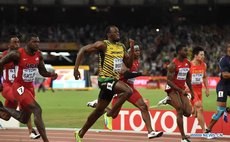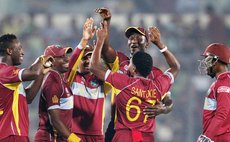The bricks and mortar of a good cricket team
With cricket in the Caribbean suffering demise for an appreciable length of time, it would seem appropriate that there is incentive for enterprising youngsters to form their own cricket teams from scratch. They did so in the nineteen forties, fifties, sixties and seventies - sometimes with remarkable effect as far as performance standards were concerned. Many were the players who in meteoric fashion went on to play for Dominica at a time when this country blazed a prolonged trail of success at sub-regional level. One is inclined to ask why this doesn't seem to happen at present - at a time when financial benefit to be obtained by the game's premier performers grows astronominically higher each year.
In the remote past there were as many as eight top flight cricket league teams, all of them of rather exceptional pedigree. So when you talked about Wolves, Notre Dame, Black Cats, Casuals, Dominica Grammar School and St Mary's Academy, you were talking about the absolute cream of Dominica's cricket. The public flocked to watch men like Ivan Shillingford, Mally Frampton, David K. Burton, Bernard and Gerard Cools-Lartigue, Simon Francis, Bobby Pemberton, Eric Richards, Val Felix, Alec Reid, Eddie and Mill Trotter, Munro Charles and very many others perform at the Botanic Gardens and Windsor Park each weekend of the cricket season from January to May or June.
It was a time, too, when island trial matches were prized as something very much worth watching. The quality was such that there were batsmen who scored heavily and couldn't make sufficient impact to force their way into the national team.
Assuredly, the luminaries mentioned above served as role models for budding youngsters. That at a time before television had reached the Caribbean. In the nature of things, there was tendency for emerging young talent to be immediately grabbed by the established teams via whom there was straightforward passage into the national team. That did not, however, deter formation of new teams by youths wishing to forge ahead on their own initiatives rather than jumping on ongoing band wagons.
The question, then, is how best were such new teams or clubs formulated into viable cricketing entities? Foremost was the basic need for organization and recruiting of talent. Any nucleus of promising talent would inevitably attract similar performers. Much of this evolved from old school origins or community allegiances. This was at a time when the costs of cricket gear were relatively affordable. Yet, at that time the word sponsorship was still to be invented in the way it has come to be accepted as normal to the current structuring of teams.
Allow me to utilize this article as Part I of a discourse on how any likely group of young players could meaningfully go about forming a decent cricket team or cricket club, anyway you wish to call it. Let's start with "batting" – the area of prime interest to most lovers of the game. This is not to downgrade "bowling", only to commence with a popular reference point.
Obvious requirement is a practice venue, preferably one equipped with a concrete batting strip in order to overcome weather related issues. Basic outlay would include a quantity of gear used in common: bats, batting gloves, forearm guards, batting pads, keeper's gloves and pads. One should not forget abdominal protectors or boxes. This does not preclude individual players from furnishing themselves with personal items of equipment depending on individual financial capability and long-term ambitions towards sporting development.
As an aid to proper management there would be need for a suitable individual to be responsible for safety and storage of such gear. And for purposes of administration in the broad sense, someone needs to be entrusted with the capacity of captaincy – He doesn't have to be the best or most knowledgeable player – only the most responsible person! It is just as likely his home could serve as a meeting place for the team.
How do you acquire the basic gear? Many in the past resorted to begging for discarded items. Others took the course of fund raising. And still others relied on parents and other relatives at home or abroad to assist. Added to this, players were expected to contribute via a monthly membership fee. A business house could be approached for sponsorship, but such a blessing would more likely be forthcoming if the team has the advantage of displaying top quality in its match performance.
Very next question is how such top quality is acquired, and is of real critical concern! The art of batsmanship here is a significant consideration.
The most advisable course is to pursue the art of batting along traditional lines – not limited over's approaches differing from the basic fundamentals. Orthodoxy is highly advisable as a strong base to developing one's game.
Technique is key and the very first element is soundness in defense. You can't score runs if you are dismissed the very first ball you face. In any case, all successful batsmen acquire sizeable scores by occupying the crease for hours before getting out. Hence, it is a life saver to guard your wicket relentlessly.
In a subsequent article I will treat pertinent aspects of personal development in the art of batsmanship leading to appetite and single-mindedness in achieving consistently high scores. Reminds me of the book featured in our school library at D.G.S. "How to Score a Century." Conversely, there was a comparable text entitled "How to Bowl them Out". Let's look forward to a meeting of minds in the hope that we can light a few credible candles to lift the darkness on more hopeful batting abilities translated into sizeable scores.




